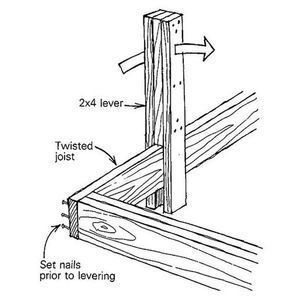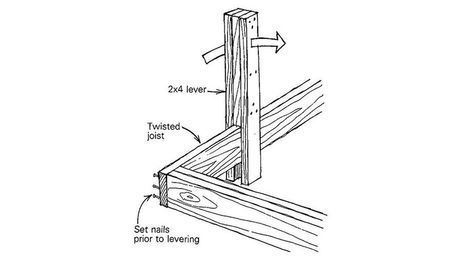Install Wood Flooring Series: Nailing the Floor
Learn how to securley fasten the flooring to the subfloor
Get comfortable, pay attention, and use a few tricks to get the best fit with the least amount of trouble.
Video Transcript:
Once the floor is racked out, it’s time to start nailing. Wear safety glasses, earplugs and kneepads. Trust me.
If a board has a slight bow, you’ll be able to pull that in as you work your way down with the nailer. When beginning the nailing process, you may have to side-nail the second row to the first using a finish nailer, because the space between the rows may be too small for a larger nail gun. Once the second row is in, you’ll be able to use the large nailer and pick up speed.
Because the flooring material is so narrow on the side of the board, if you pick up the nailer just slightly, you may miss and end up sinking a nail in the top of the board instead of the side. Or, if the nailer is not aligned, you may end up sinking a nail in the subfloor; either pull it out or knock it down. For the top nail, you can either fill it or, if you catch it early, pry the board out and cut off that tiny spot where the nail is. Just make sure the tongue of the board is OK after you pry out all the fasteners. If the tongue is damaged, the next row that butts up against it will have nothing locking it in place.
Use a level to make sure the floor is flat at 1/8 inch over 6 feet, or 3/16 inch over 10 feet.
If a board is too tight, try tapping it in at an angle to make it fit and get a straight joint. Another option is to use a screwdriver; drive it into the subfloor vapor retarder along the length of the board to nudge it in. Or you can lay wedges along the board and use a hammer to tap the wedges, pushing the board into place. I also have a specialized jack for this purpose. But if you don’t have the jack, you can improvise. Place a block of scrap next to the errant board, and take a pry bar, bracing it against a stack of turned-around floorboards so that you don’t damage their fronts. Pull the pry bar against the block, pulling the errant board into position. Using a mallet to tap along the board will help.
For the last few rows, you’ll need to switch back to the finish nailer to top-nail them; the pneumatic nailer won’t fit in that area. I can’t stand looking at top nails, though, so I use a hammer to still nail the boards in from the side. Engineered material has plywood underneath, so I can hand-nail pretty easily without damaging the flooring. When I get to the last row or two, though, I will top-nail them.
In this members-only video series:

























